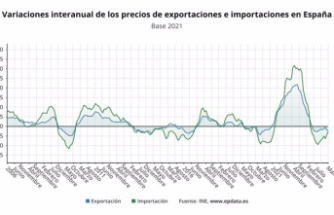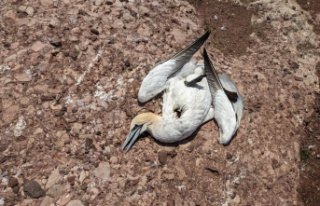Employees of a cleaning company roam the beaches of the Magdalen Islands at the controls of a tractor, in protective gear, shovel and pitchfork in hand to collect dead birds, mainly northern gannets.
• Read also: Northern gannets found dead on Bonaventure Island: the phenomenon is circumscribed but worrying
• To read also: Avian flu: unheard of
• Read also: Bas-Saint-Laurent: thousands of carcasses invade the region
This is the sad task of the employees of Lavages Industriels Vigneau, a local company mandated by the Quebec Ministry of the Environment and the Fight against Climate Change (MELCC), these days.
Over a hundred birds, mainly northern gannets, were collected in less than two days of work.
About sixty kilometers scattered on the 17 most frequented beaches will be cleaned in this way.
The different authorities took some time to agree on how to remove the birds from the beaches, so the carcasses accumulated for several days.
Hence the need to use equipment such as a tractor to remove them.
If there were a few dozen gannet carcasses strewing the beaches of the Magdalen Islands in mid-May, there are now a few hundred specimens around the archipelago. The ministry listed about 300 just two weeks later. But biologists and islanders believe there are even more.
Premier cas
These were the first cases of this virulent avian flu detected in gannets in Canada, although this strain, of this specific species, was first recorded in Ireland.
It was citizens who first reported the multiple bird carcasses to the authorities, explains biologist Ariane Massé.
Five specimens were analyzed at the Quebec Center for Wild Animal Health in Saint-Hyacinthe for a complete necropsy. Following genetic and swab tests, all tested positive for the virus.
Fragility
Jean-François Rail, a biologist with the Canadian Wildlife Service, federal Department of Environment and Climate Change, has been studying seabird populations for nearly 30 years.
The northern gannet is a species that, for a dozen years, seems to have difficulty finding its food, among other things during its nesting, he explains.
The imposing bird, with a wingspan of two meters with outstretched wings, feeds on larger fish, such as herring and mackerel, fish that have become scarce in the Gulf of St. Lawrence. They must therefore more and more often travel several kilometers to bring food to their young. They are sometimes gone for four to five days, which compromises the survival of the young and the reproductive success of the species.
However, he is not ready to say the link between the difficulty in feeding and their fragility to succumb to the virus. For now, he has the impression that some strains of bird flu are more virulent than others.













